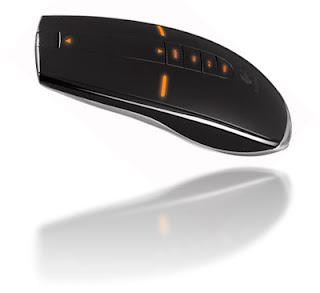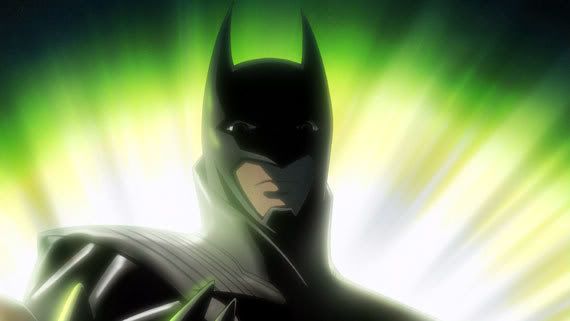Game Review: Fracture
Does terrain deformation give this game a facelift or does it sink it into a crater?
 ____________________________________________________________
____________________________________________________________TOTAL SCORE: 8.0/10
The Good:
Huge variety of weapons * Good use of innovative terrain deformation element * Graphically impressive
The Bad:
Poor use of cut-scenes * Distinct lack in enemy variety * Inconsistent enemy A.I. * Generic music * Some technical glitches
____________________________________________________________
The shooter genre can be a tough nut to crack – no thanks to the waves of run-of-the-mill titles released by the various publishers every year. A handful of games, including Lost Planet: Extreme Condition and Battlefield: Bad Company, have taken to environmental destruction to distinguish themselves from the others. Fracture works with this idea, but greatly expands on the concept. The result is an innovative and unique shooter built around the notion of terrain alteration. Does this imaginative element provide the game with a facelift or does it sink it into a crater?
Fracture thrusts you into year 2161. Global warming has arrived at its zenith and the ocean has conquered a portion of the United States, splitting the nation into half. The west (the Republic of Pacifica) has adopted genetic modification to better their citizens, while the east (the Atlantic Alliance) has decided that a brighter future can be achieved by technological advancement. You are put into the shoes of Jet Brody, an Atlantic Alliance soldier sent to the Republic of Pacifica base in San Francisco to negotiate with, if not apprehend, the Pacifican leader Nathan Sheridan after genetic modification has been outlawed by the government. Still bitter with the ban on genetic modification, Sheridan isn’t so keen on negotiations and proceeds to initiate an assault on the east. It’s now up to you to stop his rebellion, infiltrate his bases, find him and put an end to his ambitions.
The shooter genre is one that typically deals with perfunctory backstories – and Fracture does little to prevent itself from succumbing to the said stereotype. This is made more unfortunate because of the fact that Fracture does have an interesting premise which has lots of potential for plot expansions, but it expectedly succeeds in brushing its story aside once the gameplay begins. It’s like the developers have this really great introduction, but then they don’t really have an idea on how they could continue with their tale – so they shove in additional, if somewhat superfluous, phrases and sentences to embroider and expand the introduction. At the end of the day, however, there’s only this shallow script. The title of this script: Fracture.
You could mention that that’s all the details the game needs since the plots in shooters have always been about providing you with just enough reasons for you to go pop the heads off truckloads of baddies. I couldn’t disagree on that point, could I? But what startled me was Fracture’s exceedingly poor use of its cut-scenes. Never mind their clumsy execution which was demonstrated in out-of-sync mouth movements throughout the duration of the game. More noteworthy, however, were the cut-scenes’ excessively obvious failure to progress the plot. The said necessity was reduced to mere ‘Oh, they are attacking us!’ and ‘OMG! Look, they are using [insert threat here] to attack us!’ moments. Really, what’s the point of having cut-scenes in Fracture then? The game would be better off without them – and it would have been an improved product too.
Story and cut-scenes aside, Fracture is a rather enjoyable game peppered with a few easily-forgivable flaws here and there. Shooters have always been about providing a wide arsenal of weapons for the player to toy around with – and on that count, Fracture delivers. There are about a dozen of weapons to tinker with, among which are some of the standard ones like the sub-machine gun, shotgun, sniper rifle and grenade launcher and other more creative ones like the Rhino, which sends a electrically-charged boulder rolling to your enemies, the Lodestone, which pulls all objects in the target’s surroundings towards it, and the ALM-37 Deep Freeze, which freezes enemies temporarily. Being aware of the environment is essential to your survival in Fracture as different weapons can wield varying advantages in any given situation depending on the objects present in the environment. Some of the weapons are necessary for solving some of the puzzles in the game, but more on that later.
Besides equipping yourself with any of the 2 weapons, you will also be allowed to carry 4 grenade types. A tectonic grenade creates a lump in the ground, while the subsonic grenade, a crater. Throw a spike grenade and a spike which towers into the sky will rise from under the ground. A vortex grenade, arguably the strongest grenade type and the hardest to find, creates a vortex that will pull everything in its immediate vicinity towards it, sucking them and blowing up in a massive explosion. All in all, there’s a healthy variety of weapons in Fracture.
But the weapons aren’t the highlight of Fracture. Rather, it is the ability to alter the terrain. Marry it with destructible environments and what you have is a shooter that has a constantly evolving battlefield – and of course, dynamic gameplay. Terrain deformation is what the game calls it and it is this element that will set Fracture apart from the many run-of-the-mill shooters out there. With a suit function known as the Entrencher (or via using the tectonic or subsonic grenade), you can either raise or lower the ground. Basic uses include raising the ground to reach higher ledges and platforms, and create temporary cover, as well as lowering the ground to enter dirt-filled tunnels. Many commercial videogame journalists have criticized this feature as being underused, but I beg to differ. In fact, this raise/lower ground feature has made some really creative puzzles in the game possible. In one, you have to manipulate the terrain so that rounded mines can get to their targets (think of it as LocoRoco in 3D). In another, you can raise the ground to crush enemies into the ceilings. At other instances, you would be altering the terrain to dislodge pillars or sockets, and raising or lowering debris so that energy beams can be reflected onto their targets. Underused? Far from it.
Puzzles in the game aren’t necessarily limited to terrain deformation, though. There are some light platform sections where you have to use the Lodestone, a weapon which pulls all subjects in the target’s surroundings towards it, to move various platforms into jump-friendly positions. However, not all puzzles are as intelligent. The spike grenade seems to be grossly underused, almost to the point where it seems to be forgotten altogether. The spike grenade is only used in instances where you need to nudge something up, say a bridge, or in instances where you need to create a platform for you to be able to reach even higher grounds. Other than that, the spike grenade is practically useless. Disregarding the spike grenade, it is Fracture’s ability to allow you the freedom to screw around with your environments in any way you deem fit which makes this game such a satisfying and immensely fun one.
The same could not be said about the enemies, however. For all its variety in weapons, Fracture suffers from a distinct lack in enemy variety. There are only a handful of enemy types that you will get to face off against in the game: the sub-machine gun wielding guy, the rocket launcher guy that can leap to great heights, the shotgun wielding guy donned in a spacesuit, the grenade launcher wielding guy (also donned in a spacesuit), another variation of the sub-machine gun wielding guy who has teleportation abilities, the Half-Life 2 Antlion-esque bug and the Minotaur-like beast called Bolla. If you’re keeping count, that’s a total of 7 enemy types. That’s quite a number, but for most parts of the game, you would be encountering the sub-machine gun wielding guy, the shotgun wielding guy and the grenade launcher wielding guy; the others appear at very specific points in the game. This lack in enemy variety starts to drag the game down in the later parts when you start to encounter the same enemy over and over again.
It doesn’t help that the enemy A.I. is vastly inconsistent. In some instances, enemies take cover when shot at or switch cover if they find that their positions are being compromised but at other times, they display a blatant lack of common sense by staying riveted on open ground or failing to react even the slightest to your shots. Fracture compensates for this by planting enemies on every conceivable shooting angle and setting a generous number of enemy respawns. The result is a game that is challenging – though unfairly challenging.
On the technical side of things, the game does look good. Thanks to the terrain deformation abilities of the suit and the huge number of explosive-loaded weapons, Fracture has quite a number of opportunities to parade its impressive terrain alteration and explosion effects. It is even more impressive that the game manages the action with hardly a hitch in framerate save for slight drops at a select number of save points. The music, however, is very much generic, sounding monotonous at best. One of the most victimized portions of the game must be the driving mission. In it, you drive a futuristic buggy and must escape a facility before it blows up. The music fails to effectively convey any kind of intensity or dread, making the drive-and-escape mission feel routine. It is a pity, really, because a better piece of music could add layers of additional value to the game, especially for a highly-intense shooter like Fracture.
I also discovered a few glitches while playing the game. Most unfortunate was the instance where a boss character got stuck behind some crates. From my position, I could get several clips of bullets into its weak spots while it stood motionless. In another glitch, my health was unable to recharge even though I was not being shot at, putting me at a great disadvantage as I was in a near-death situation. Other minor glitches include enemies being stuck in animation behind barriers.
Like any other shooter, I was able to get 10 hours out from Fracture’s single-player. There’s some replay value here – mainly because there are data cells to be collected here. Some of these data cells are cleverly hidden, while some require more creative uses of your terrain alteration abilities to obtain. What they unlock, however, isn’t quite as rewarding as I’d like them to be. Depending on the number of data cells which you have gathered, equipments in the Weapons Testing mode may either be locked or unlocked. The said mode is unique, if very much pointless. After you have completed the single-player, there are the requisite multiplayer modes to toy around with.
Final comments
Overall, Fracture is a satisfying and fun game. It boasts a fresh and well-used concept in terrain alteration and has a wide variety of weapons that do more than just shoot – they solve puzzles. Fracture is one game that is easily enjoyable – if you can overlook some of its forgivable flaws and appreciate its greater offering – its innovation – one that actually works.










0 Comments:
Post a Comment
<< Home